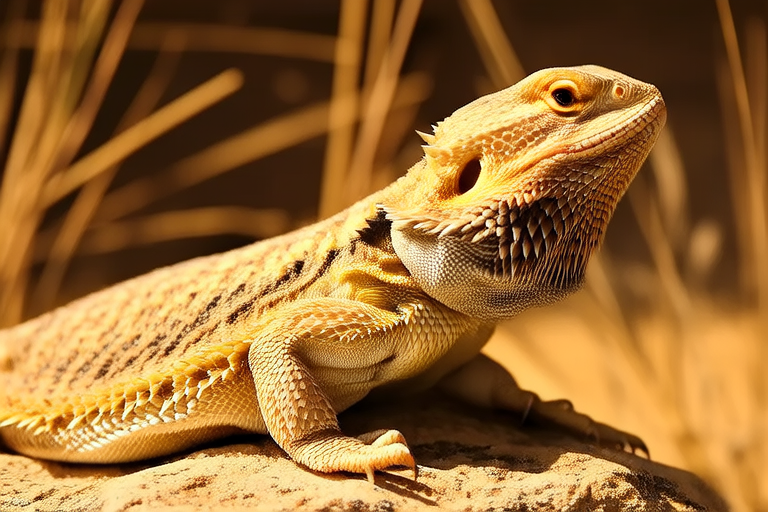Bearded Dragons: The Ultimate Guide for First-Time Owners
Introduction
Welcome to the wonderful world of bearded dragons! These charismatic reptiles have become increasingly popular as pets due to their docile nature and ease of care. This comprehensive guide will walk you through everything you need to know to ensure your bearded dragon lives a happy, healthy life.
Basic Care Requirements
Before bringing home your bearded dragon, it’s crucial to understand its basic needs. Bearded dragons require a warm environment with specific temperature ranges, clean water, and proper lighting. They also need a balanced diet and regular handling to stay healthy.
- Temperature: Maintain a basking spot between 95-110°F (35-43°C) and a cool end around 75-85°F (24-29°C).
- Humidity: Keep humidity levels at 30-40%.
- Lighting: Provide UVB lighting for 10-12 hours daily to aid calcium absorption.
Habitat Setup
A well-designed habitat is key to your bearded dragon’s happiness. Here’s how to set up the perfect home:
- Tank Size: A 40-gallon tank is suitable for an adult bearded dragon.
- Substrate: Opt for reptile carpet or paper towels instead of sand to prevent impaction.
- Hiding Spots: Include caves or shelters where your dragon can retreat when stressed.
- Basking Spot: Position a heat lamp at one end of the tank for basking.
Diet and Nutrition
Feeding your bearded dragon correctly is vital for its growth and overall health. Their diet should consist mainly of insects and vegetables.
- Insects: Feed crickets, dubia roaches, or mealworms dusted with calcium powder twice weekly.
- Vegetables: Offer leafy greens like collard greens, mustard greens, and dandelion greens daily.
- Fruits: Occasionally give small amounts of fruits such as strawberries or blueberries.
Common Health Issues
Despite proper care, bearded dragons may face certain health problems. Recognizing these early can save your pet’s life.
- Mouth Rot: Characterized by swelling and redness around the mouth.
- Metabolic Bone Disease (MBD): Caused by insufficient calcium intake leading to weak bones.
- Impaction: Occurs when food gets stuck in the digestive tract, often due to inappropriate substrate.
Behavioral Insights
Understanding your bearded dragon’s behavior helps you bond better and detect any signs of distress.
- Signs of Contentment: A relaxed posture with closed eyes.
- Signs of Stress: Darkening beard, puffing out, or hiding more than usual.
- Interactions: Your dragon might wave its front leg if it wants you to leave it alone.
Tips for Handling
Handling your bearded dragon gently and frequently builds trust and strengthens your bond.
- Approach: Move slowly and speak softly to avoid startling your dragon.
- Pick Up: Support your dragon’s body fully; never grab by the tail.
- Duration: Limit handling sessions to 15 minutes initially, gradually increasing as your dragon becomes comfortable.
Conclusion
Caring for a bearded dragon is both rewarding and challenging. With this guide, you’re well-equipped to provide your pet with a loving home. Remember, patience and consistency are key. Enjoy the journey of raising this fascinating creature!
